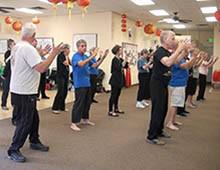What is HIIT?
High-Intensity Interval Training, or HIIT, is a structured exercise strategy that alternates between periods of intense anaerobic exercise and less intense recovery phases. This regimen includes bursts of high-energy workouts such as sprinting or fast-paced bodyweight exercises that push you close to your maximum effort. These high-intensity periods, typically ranging from five seconds to eight minutes, are followed by recovery intervals that last equally long or longer depending on the workout intensity.
A typical HIIT session might last anywhere from 10 to 30 minutes, and despite its shorter duration, it effectively enhances metabolic rates, burns calories quickly, and leads to significant aerobic and anaerobic fitness gains.1 The key components involve varying exercises that spike heart rates followed by periods of rest allowing for recovery but keeping the workout challenging.

How does HIIT burn fat?
HIIT significantly elevates the body's metabolic rate not just during, but also well after the workout is completed. This is largely thanks to Excess Post-exercise Oxygen Consumption (EPOC). Post-HIIT, your body undergoes a recovery phase where it attempts to restore itself to a pre-exercise state. This process requires oxygen, increasing the overall energy expenditure, and therefore, significantly boosting your metabolism.
The activities involved in HIIT like sprints or burpees are performed at maximum effort. This intensity means you consume more oxygen during the workout and after. The body tries to clear out the lactate production and repair micro-tears formed in muscle fibers during these ferocious bursts of activity, contributing heavily to EPOC.2 Thus, the rate of fat and calorie burn can remain elevated for anywhere from a few hours to an entire day, long after you've finished your workout.
The nature of HIIT—alternating between high and low-intensity intervals—ensures that the body burns calories more efficiently during workouts too. For example, the all-out sprints increase heart rate and calorie burn, while interspersed rest periods allow you to sustain this higher level of exercise for longer than if you tried to sprint continuously. This peaks the metabolic demands, significantly torching more calories per minute than traditional, steady-state cardio sessions.
Can HIIT improve muscle mass?
While it's well-known that HIIT is excellent for burning fat and improving cardiovascular health, its effects on muscle mass are also significant, albeit more nuanced. This intense, interval-based style of training can lead to increases in muscle mass, mainly in individuals who may not already engage heavily in resistance training.
Within the training regime of HIIT, exercises like squats, lunges, and push-ups involve multiple muscle groups simultaneously, fostering an optimal environment for muscle growth. When engaging in high-intensity bodyweight activities, you're actively recruiting large muscle groups. This recruitment is a stimulating factor for muscle hypertrophy, most noticeable in the legs, glutes, and core — areas typically emphasized in many HIIT workouts.
Studies exploring the impacts of HIIT on muscle mass offer promising insights, particularly for those less accustomed to structured exercise or athletes early in their strength-building journey. Research highlights that interval training can spur increases in skeletal muscle mass, particularly when initiated among individuals with lower initial muscle tissue footprints.3
However, the muscle gains from HIIT shouldn't be misunderstood as equivalent to outcomes observable from traditional weight training. Instead, HIITS' muscle-building effect leans more towards functional strength and endurance rather than substantial increases in muscle size as seen with focused weightlifting routines. Crucially, typical HIIT methodologies enhance type II muscle fibers—those critical for short bursts of strength and speed, complementing any resistance regimen either in form or escalated growth in tandem with traditional weight training.
Is HIIT suitable for everyone?
High-intensity interval training certainly garners applause for its fat-burning and muscle-pumping prowess, yet it's vital to acknowledge it might not be a one-size-fits-all fitness strategy. HIIT, with its bursts of sprint-level exertion, demands a significant amount from the cardiovascular system and joints, thus raising important considerations about its appropriateness for everyone.
For individuals just starting their fitness journey or those with existing health conditions, the intense nature of classic HIIT routines could be more risky than beneficial. The rapid and repetitive high-impact movements may exacerbate joint pain or lead to injuries if not performed with caution and proper guidance from fitness professionals. Individuals with arthritis or heart problems should approach HIIT carefully, tuning into how their body responds to increased physical stress.
Adaptations, however, make HIIT accessible and safer for a broader range of fitness levels. Beginners or those with specific limitations can engage in "Low-Impact HIIT" that swaps jumps and sprints with exercises that are less jarring on the body but maintain the hallmark high-intensity burn, like using a stationary bike or performing arm-intensive activities. These modifications ensure that participants still experience the metabolism-boosting benefits of HIIT but at a manageable intensity level that aligns with their personal health and fitness baseline.
Length of exertion and recovery periods can be customized. Traditionally vigorous 30-second intervals can be shortened, and relaxing intervals lengthened to craft a forgiving but effective HIIT routine. Such an approach accommodates those who might find continuous effort challenging or health-risking, affording them the full control to gauge exertion due in tune with their body's signals.
Anyone considering HIIT should initially consult with a health professional — whether a doctor or a fitness expert trained to assess individual health needs and potential risks. Such consultations ensure that the intensity of HIIT does not overshadow its intended health benefits. They can provide personalized advice and perhaps even supervise initial sessions to model appropriate forms of adaptations designed to protect against injuries and align with personal health statuses.

What are the health benefits of HIIT?
Engaging in High-Intensity Interval Training (HIIT) brings a multitude of health benefits, each of which can contribute significantly to an individual's overall physical well-being and medical profile. Research points particularly to improvements in:
- Cardiovascular health: HIIT's intense cardio episodes push the heart to adapt to varying intensities, strengthening cardiac muscles and improving blood circulation. This form of training can reduce heart disease risk factors such as hypertension, high cholesterol, and plaque build-up in the arteries.4
- Insulin sensitivity: This condition is vital for managing blood glucose levels and minimizing the risk of type 2 diabetes. During a HIIT session, the body's muscle cells are driven to use glucose for energy, reducing blood sugar levels. Over time, the body's responsiveness to insulin improves, helping to keep blood sugar levels in check more effectively.5
- Overall endurance: With HIIT, there is an increase in aerobic capacity—the ability of the body to take in, transport, and utilize oxygen effectively—and an improvement in anaerobic capacity, which focuses on the body's ability to handle activities intense enough to cause lactate to form. Studies have verified that participants who engaged in HIIT workouts saw both an increase in their VO2 max—a marker of aerobic fitness—and better endurance capacities.6
HIIT has been advocated for its potential benefits on mental health, stemming from its capacity to reduce stress, anxiety, and depression. The rigorous physical activity associated with HIIT releases endorphins, known as 'feel-good' hormones, which provide mood elevation and a general sense of well-being. The quick and flexible nature of HIIT schedules fits well into busy lifestyles, helping individuals commit to regular exercise regimes that combat stress and its derivatives.
Let Writio write your content with AI precision! This article was crafted by Writio.
- Gillen JB, Gibala MJ. Is high-intensity interval training a time-efficient exercise strategy to improve health and fitness? Appl Physiol Nutr Metab. 2014;39(3):409-412.
- Townsend LK, Islam H, Dunn E, Eys M, Robertson-Wilson J, Hazell TJ. Modified sprint interval training protocols. Part II. Psychological responses. Appl Physiol Nutr Metab. 2017;42(4):347-353.
- Osawa Y, Azuma K, Tabata S, et al. Effects of 16-week high-intensity interval training using upper and lower body ergometers on aerobic fitness and morphological changes in healthy men: a preliminary study. Open Access J Sports Med. 2014;5:257-265.
- Kessler HS, Sisson SB, Short KR. The potential for high-intensity interval training to reduce cardiometabolic disease risk. Sports Med. 2012;42(6):489-509.
- Little JP, Gillen JB, Percival ME, et al. Low-volume high-intensity interval training reduces hyperglycemia and increases muscle mitochondrial capacity in patients with type 2 diabetes. J Appl Physiol (1985). 2011;111(6):1554-1560.
- Milanović Z, Sporiš G, Weston M. Effectiveness of High-Intensity Interval Training (HIT) and Continuous Endurance Training for VO2max Improvements: A Systematic Review and Meta-Analysis of Controlled Trials. Sports Med. 2015;45(10):1469-1481.
Leave a Reply